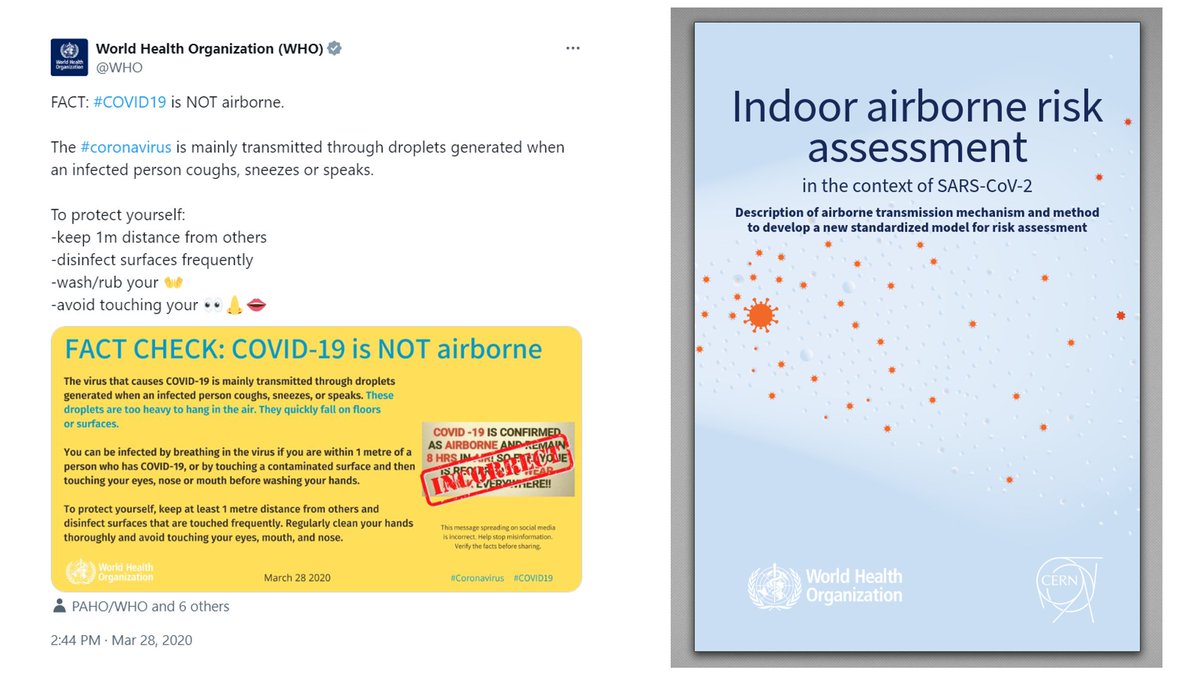BREAKING
CDC changes COVID-19 guidance, airborne is primary way the virus spreads, touching surfaces is NOT the main way. #Ventilation is important, as it goes beyond 6 ft and remains suspended in the air.
H/T @jljcolorado & @jmcrookston
CDC changes COVID-19 guidance, airborne is primary way the virus spreads, touching surfaces is NOT the main way. #Ventilation is important, as it goes beyond 6 ft and remains suspended in the air.
H/T @jljcolorado & @jmcrookston

Canada, you need to revise your guidance to be in line with science, known since February. Add breathing and inhalation. Minimize surface transmission. Add poorly ventilated spaces as risk factor, remains in the air and travels greater than 2m indoors.
canada.ca/en/public-heal…
canada.ca/en/public-heal…

One-stop must-read by the top aerosol scientists:
FAQs on Protecting Yourself from COVID-19 Aerosol Transmission
This document is frequently updated.
Shortcut: tinyurl.com/FAQ-aerosols
FAQs on Protecting Yourself from COVID-19 Aerosol Transmission
This document is frequently updated.
Shortcut: tinyurl.com/FAQ-aerosols
Source of the images:
https://twitter.com/DavidElfstrom/status/1307805566685847554?s=20
Looks like the update was a draft, it has been reverted to the June version. Hopefully a prompt update will come, as far too many regions are still behind on face coverings and indoor ventilation. cdc.gov/coronavirus/20… 

What's that quote about incompetence vs malice?
I believe the former. It wasn't properly edited, slightly confusing text on the distinction between the virus & the illness, plus the repetition of a sentence.
The science is there, this is well-known. Don't wait.
I believe the former. It wasn't properly edited, slightly confusing text on the distinction between the virus & the illness, plus the repetition of a sentence.
The science is there, this is well-known. Don't wait.
Communications is SO IMPORTANT on this, right @Mikeggibbs? What a mess.
• • •
Missing some Tweet in this thread? You can try to
force a refresh


![States high levels of CO2 and other contaminants ... can contribute to [list of five health effects, such as headaches, fatigue, difficultly concentrating], says CO2 should be below 1000 ppm, then says (incorrectly) that health effects from CO2 occur at levels above 5000 ppm. No, those effects can occur below 5000 ppm. It also states the CO2 concentrations do not indicate a risk of infectious disease transmission in a space. No, ASHRAE's position statement on CO2 states that elevated CO2 concentrations CAN reflect higher risk. Obviously, because it indicates poor ventilation, which IS an i...](https://pbs.twimg.com/media/GO6z_36WQAI7_mj.jpg)







